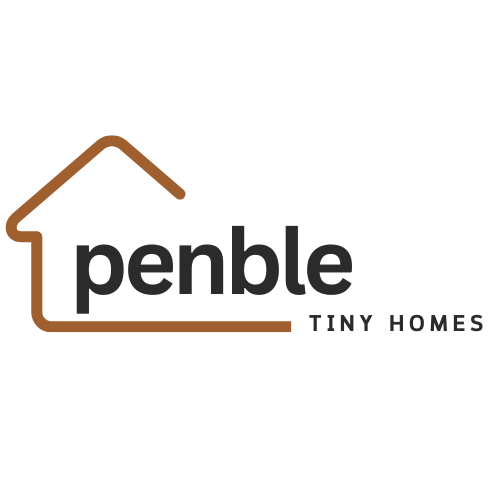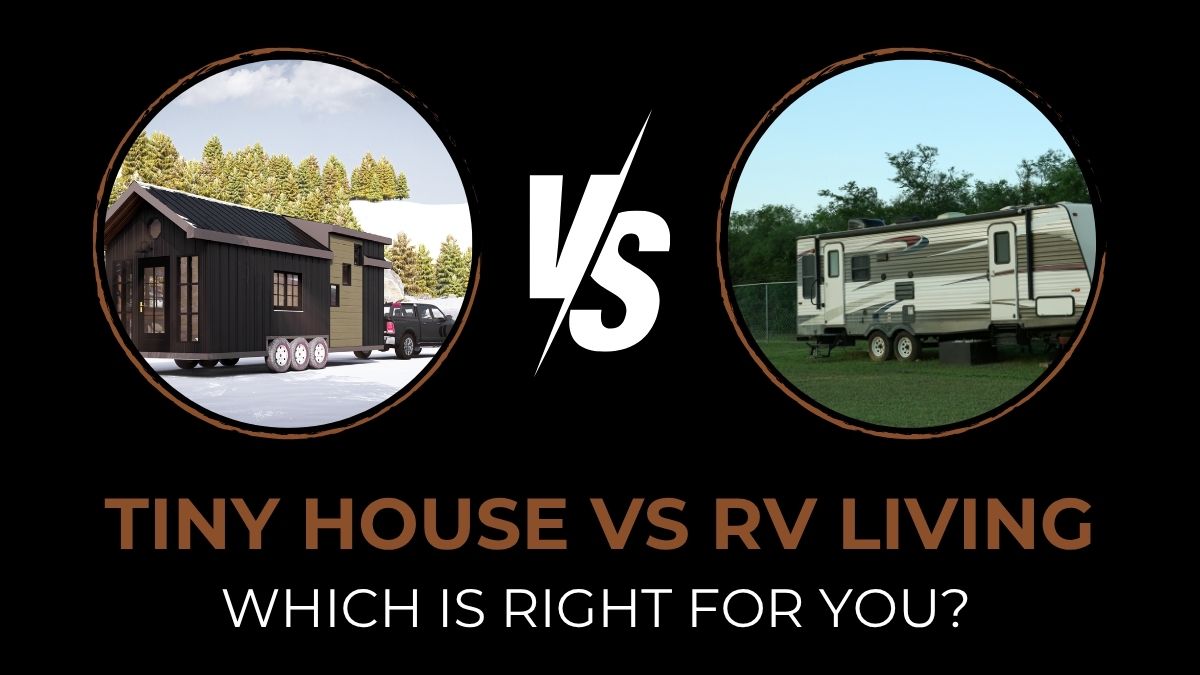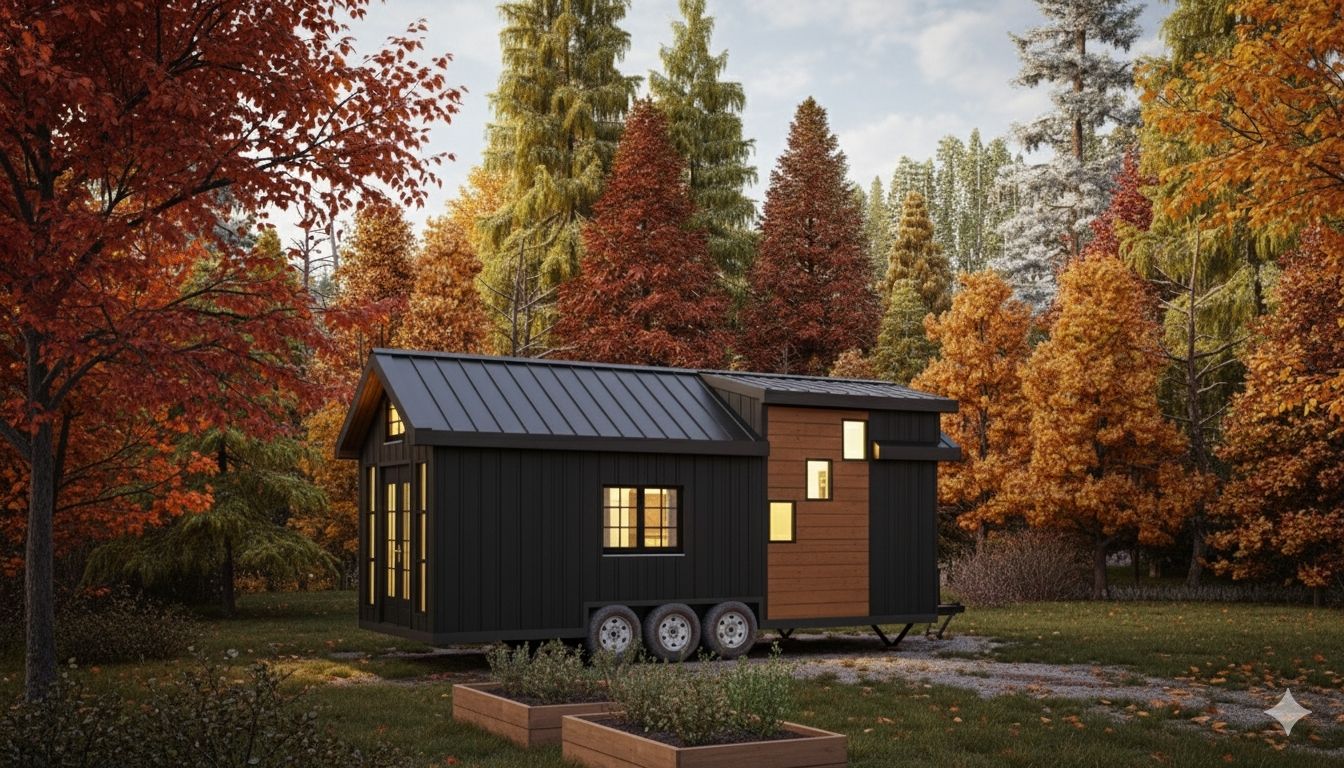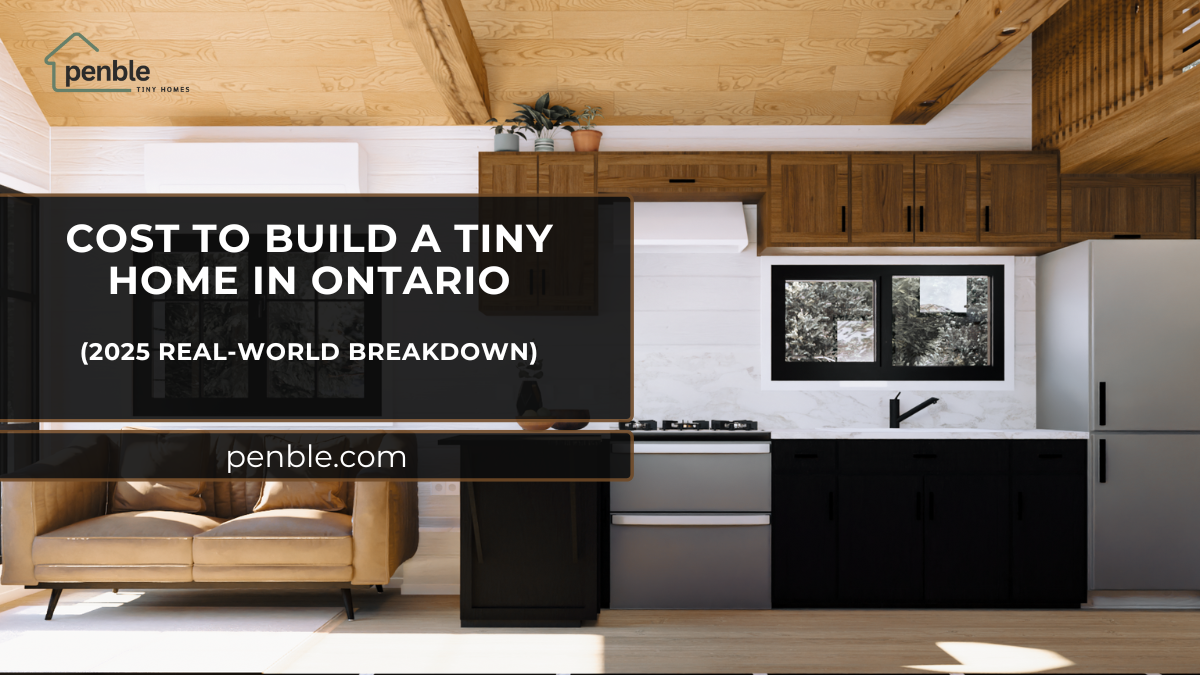If you're dreaming of downsizing and living more freely, you've probably considered both tiny homes and recreational vehicles (RVs). Both offer mobility, minimalism, and a break from traditional housing — but they’re very different when it comes to comfort, design, and lifestyle. So, which one is right for you?
Let’s break it down.
Tiny House vs RV Living: Which Is Right for You?
Structure & Build Quality
Tiny House:
Built to residential standards, tiny homes are often constructed on trailers but use real home materials — insulation, cedar siding, shiplap walls, hardwood floors. Many are designed for four-season living, making them ideal for long-term, year-round use in places like Ontario.
RV:
RVs are mass-produced for mobility. They're lightweight, built with plastic and aluminum materials, and intended for short-term or seasonal use. Not designed for full-time winter living, especially in colder climates.
✅ Winner for long-term comfort: Tiny Home
Customization & Design
Tiny House:
Tiny homes can be fully customized — from the floor plan to finishes. Want a cedar tongue-and-groove ceiling, a loft with skylights, or a composting toilet? No problem.
RV:
You're limited to preset floorplans. You can renovate, but materials and layout are much harder to modify than a home built from scratch.
✅ Winner for personalization: Tiny Home
Mobility & Travel
Tiny House:
Tiny homes can be moved, but not frequently. They’re heavy and require special towing equipment. Think of them as relocatable homes — not weekend campers.
RV:
RVs are built for the road. You can pull into a campsite, hook up to utilities, and be off again the next day. They’re made for mobility.
✅ Winner for frequent travel: RV
Cost Comparison
Tiny House:
A fully built tiny home typically ranges from $50,000–$100,000, depending on size and finish. But it’s a house — an investment with resale value.
RV:
New RVs cost between $25,000–$80,000, but they depreciate quickly like vehicles. Maintenance can add up, and most aren’t built for long-term durability.
✅ Winner for long-term value: Tiny Home
Seasonal Living
Tiny House:
Tiny homes in Canada are often built with proper insulation, wood stoves, and energy-efficient windows. Many are off-grid capable.
RV:
Most RVs aren't suited for Ontario winters. Even “four-season” models struggle with condensation, cold floors, and inefficient heating.
✅ Winner for year-round use: Tiny Home
Maintenance & Repairs
Tiny House:
Like any home, you’ll need to maintain plumbing, roofing, and finish work — but quality materials usually mean fewer breakdowns.
RV:
RVs can be maintenance-heavy. Slide-outs, propane systems, and thin walls often require constant upkeep.
✅ Winner for durability: Tiny Home
🧭 Final Verdict: What’s Right for You?
| Choose a Tiny Home if… | Choose an RV if… |
|---|---|
| You want a permanent or semi-permanent small home | You want to travel frequently |
| You live in a cold climate like Ontario | You plan to follow the sun or use it seasonally |
| You care about custom design and comfort | You prioritize mobility and campgrounds |
| You’re investing in long-term housing | You’re seeking a temporary or flexible lifestyle |
✨ The Penble Perspective
At Penble Tiny Homes, we believe in crafting tiny homes that feel like home — with full-height ceilings, natural cedar finishes, and efficient layouts that fit real life. Whether you’re looking for a full-time residence, a backyard rental, or a weekend retreat, we’ll help you find freedom without compromise.
👉 Ready to explore your options? Book a discovery call and see what’s possible.




